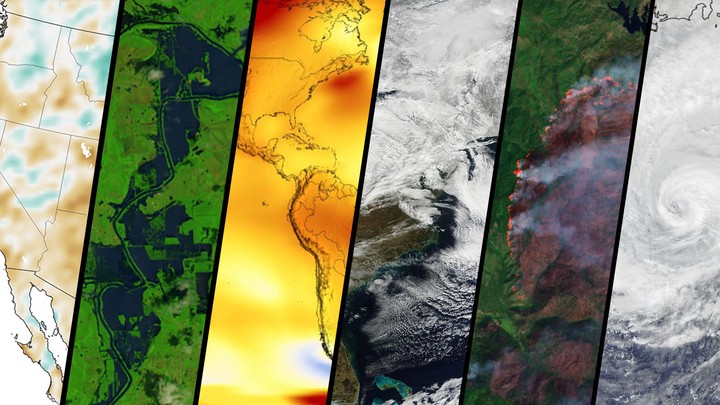Estimating Impact Relevant Thresholds of Multi-hazards in the U.S. Southeast Coast
 Image credit:NASA/JPL
Image credit:NASA/JPL
Abstract
Natural hazards such as coastal and river floods, tornadoes, droughts, heatwaves, wildfires, and landslides cause significant economic losses (e.g., agriculture and property damage) and notable counts of fatalities. While natural hazards are often considered to be caused by a single climatic driver (e.g., coastal flood from storm surge only), they can be associated with the combined occurrence of multiple drivers (e.g., coastal flood driven by storm surge and precipitation). Defining whether the climatic drivers (e.g., precipitation, temperature, or wind) are extreme enough to turn the hazards into disasters is crucial for estimating disaster risks. To date, extremeevents are often defined using the block maxima or peaks over threshold methods ignoring the effects of the built environment and socio-economic conditions. However, a hazard with the same magnitude can cause very different impacts in regions with varyingbuilt environments and socio-economic conditions. Additionally, when multiple climatic drivers are involved, traditional methods of defining extreme events (block maxima and peaks over threshold) are challenging to apply.
In this research, we employ animpact-based approach and define critical thresholds of climatic drivers for 12 different hazards, across the US southeast coast. We use the SHELDUS database (CEMHS, 2020) to identify historical hazard events that caused socio-economic losses (property and crop damage) and identify corresponding magnitudes of climatic drivers from historical in-situ observations and reanalysis datasets from 1979 to 2019. We then identify thresholds of climatic drivers for impact events where only one or multiple drivers were involved. These impact-based thresholds can be used, for example, to backfill loss databases (where impact information was not available) and to project potential impacts into the future using projections of the different climatic drivers.